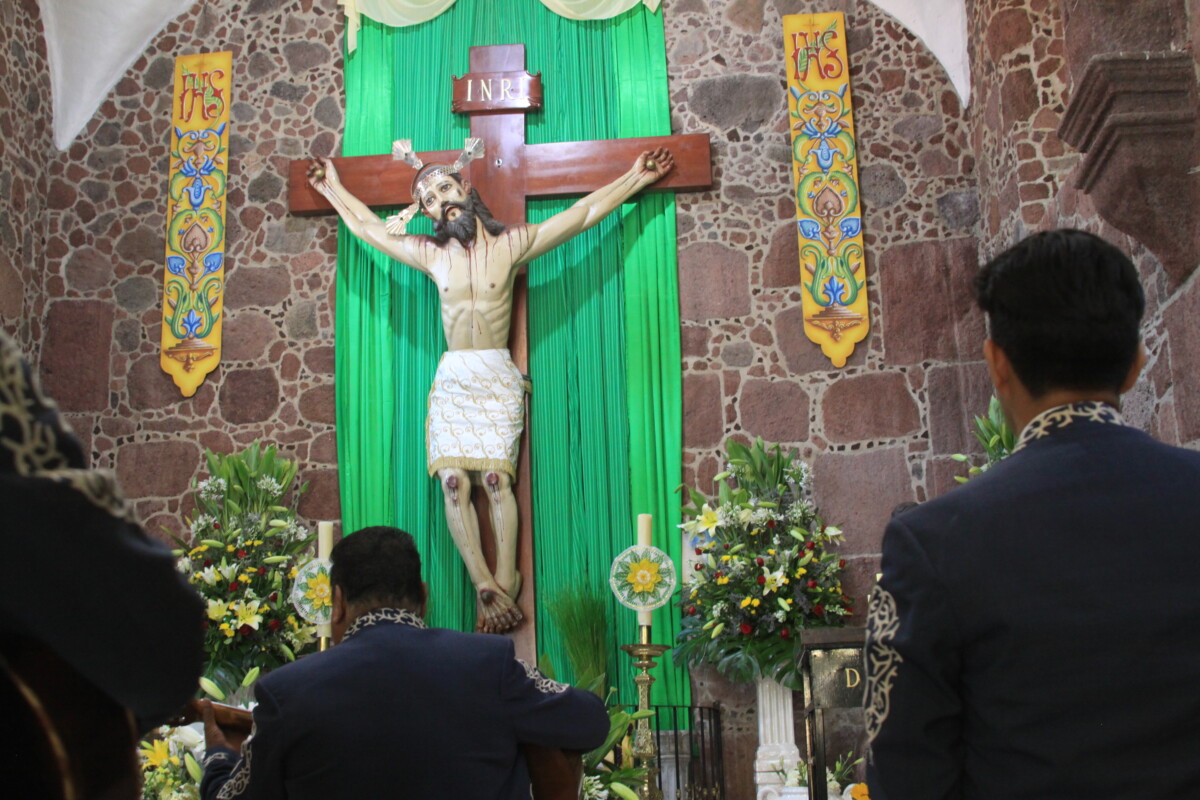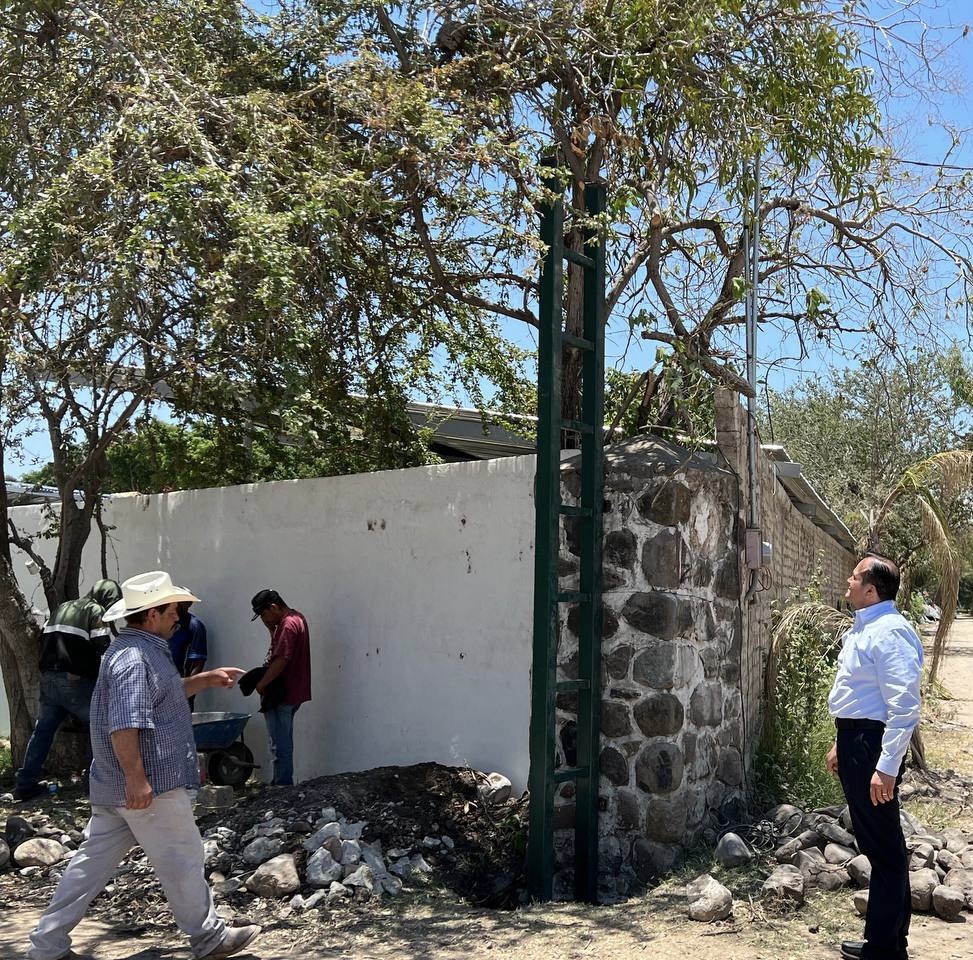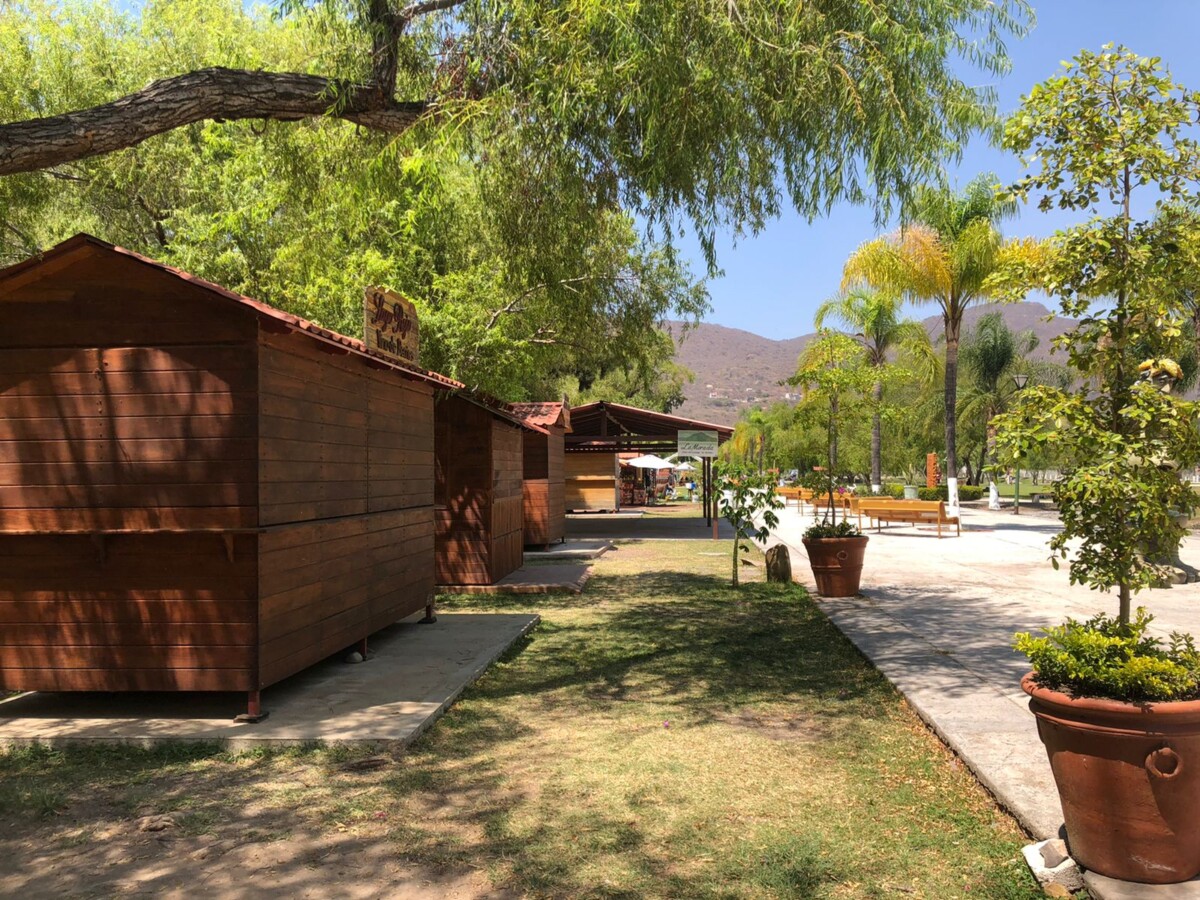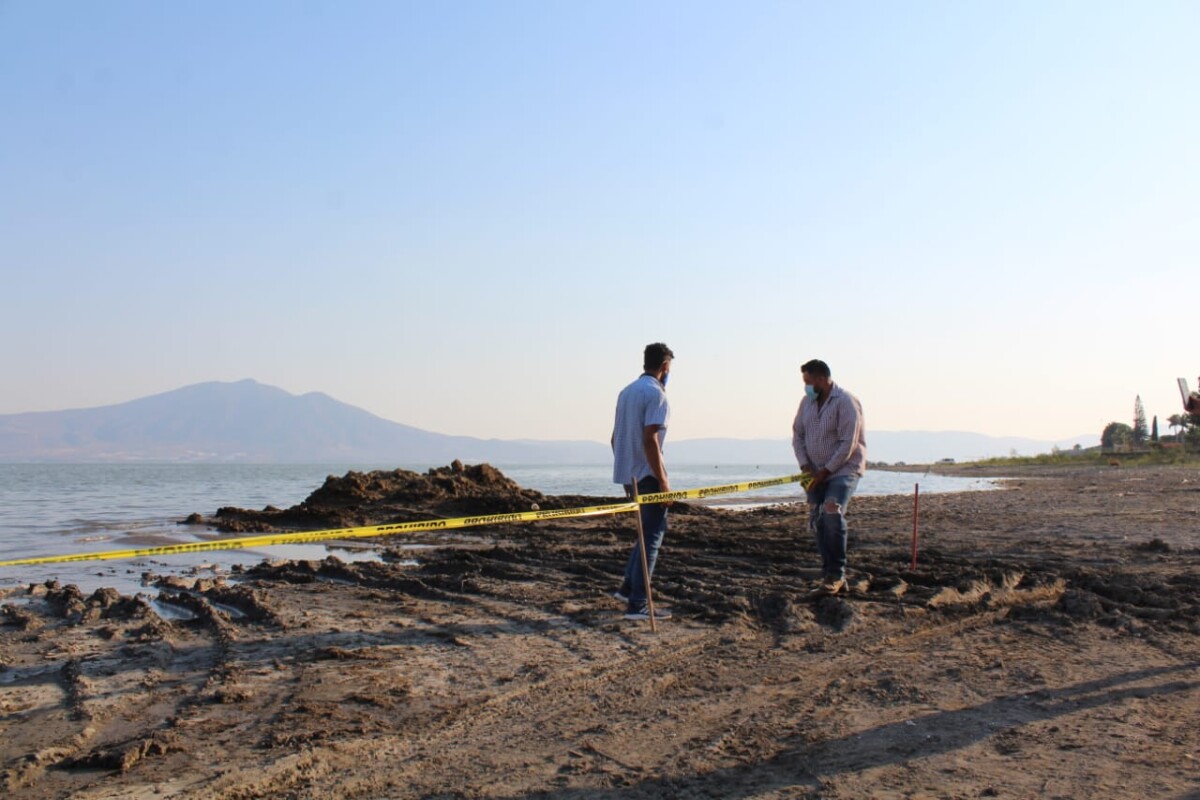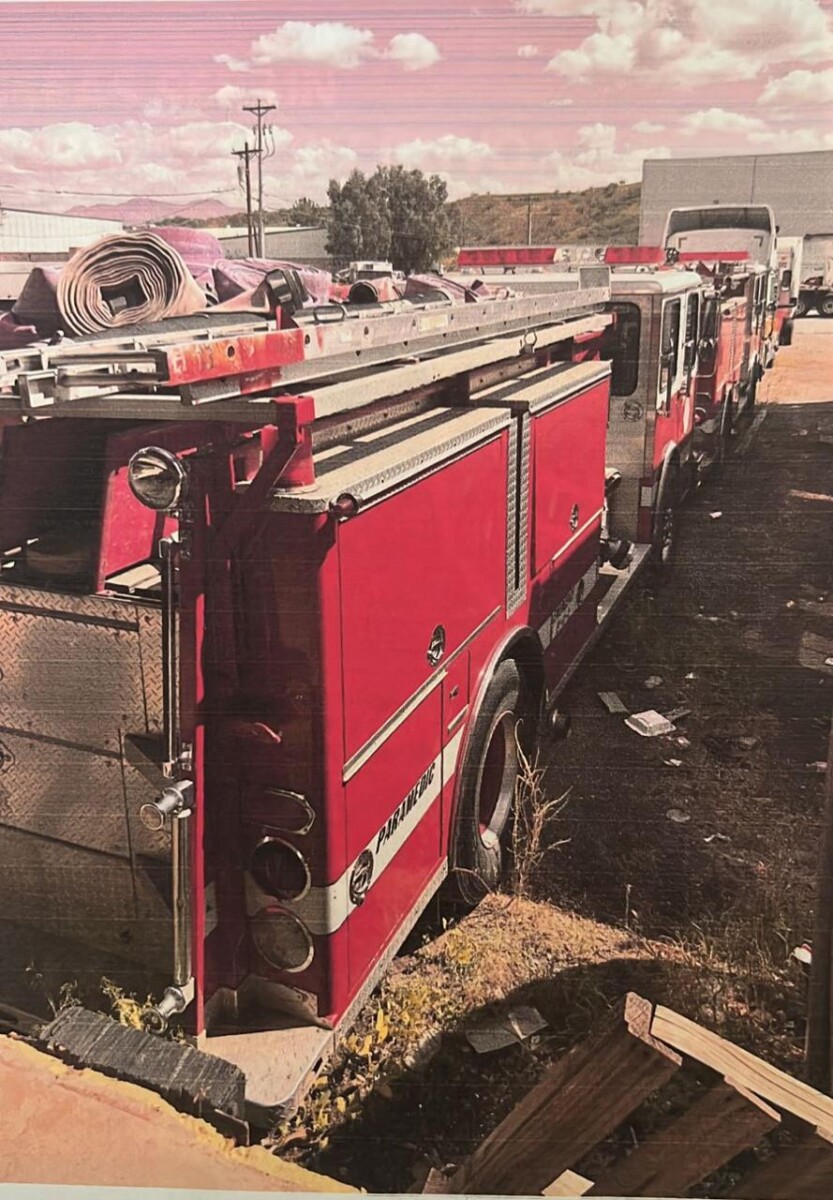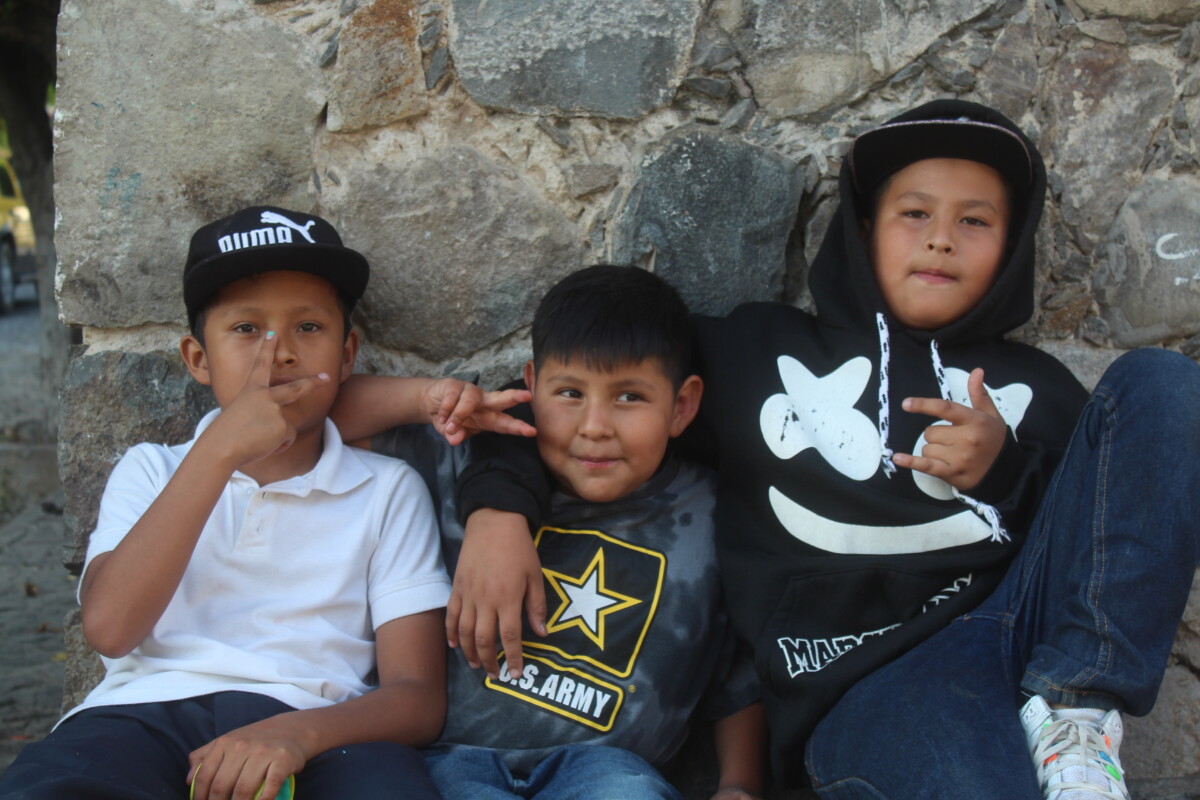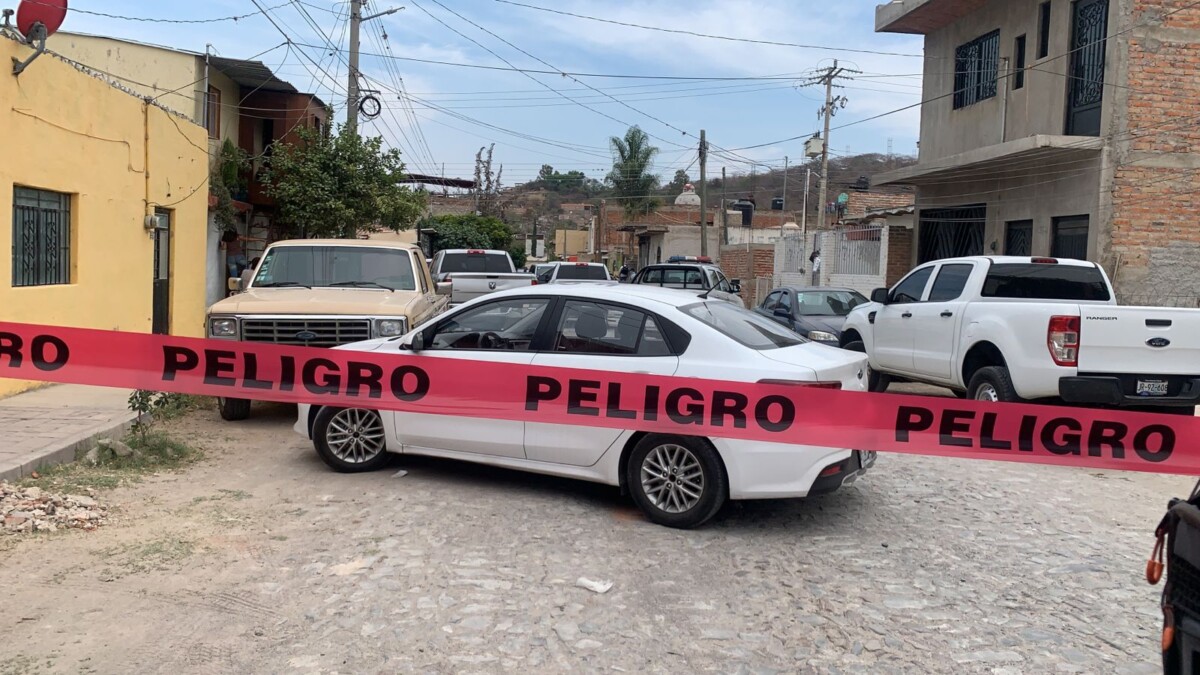ribera
Lakeside Chronicles
The traditional Las Mañanitas are sung by the mariachi in the festival of the Lord of Huaje.
By: María del Refugio Reynozo Medina
NOTE. Just as Mexican Catholics recognize many representations of “la Virgen,” they also recognize many representations of Jesus Christ. Usually these are depicted with a sculpted figure, sometimes of great antiquity and value, often dating back to the 1500s or 1600s when Spain was establishing the church here. These representations have their own names and their own celebration days, and are often credited with performing miracles on behalf of the faithful. This article refers to the celebration for “el Señor del Huaje,” a large figure of the crucified Christ made of the wood of the “huaje” or tamarind tree, which is celebrated with a festival and procession on the first Sunday in May each year.
The streets of Jocotepec are still in darkness. It is about 5:30 in the morning and the orange flowers and green foliage of the flame-red tabachine trees at the entrance of the temple look grayish.
About a hundred people are already gathered inside and outside the temple, under the leafy trees. Dances are being prepared and the brass band is playing. Steaming pots rest in their stands. Chocolate, cinnamon and tamarind atole (a hot cornflour drink) awaits the faithful who gather at the temple of the Señor del Huaje, for his feast.
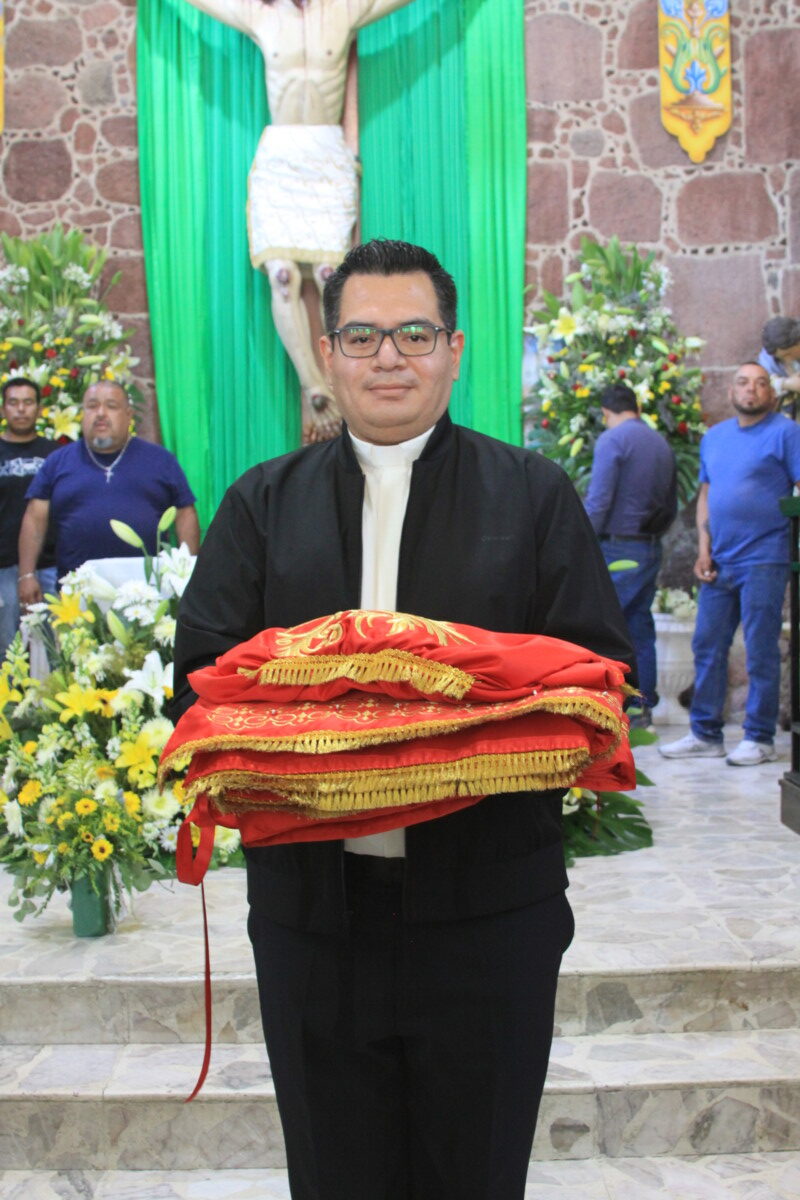
Father Eduardo Garcia Orta with the new cendal or loincloth that was presented for the festival of the Lord of the Huaje. In the words of Father Lalo, the fiery red symbolizes the spilled blood embroidered with golden threads as a symbol of royalty.
The band is playing a popular dancing song, El Mono de Alambre (The Wire Monkey). The men of the band sing. The bells ring the second call for the six o’clock mass and Father Mario Fernando Sandoval Varela comes out of the temple to welcome the cargueros (the men who will be carrying the figure of the Señor del Huaje in the procession).
“How about the music,» he says. And El Mono de Alambre is interrupted by the chants of a procession.
“Long live my Christ, long live my King,” some women sing, and the band stops.
Soon the San Cristobal Band arrives and intones the traditional Las Mañanitas, followed by waltzes and pasodobles dances, which permeate the Eucharistic celebration.
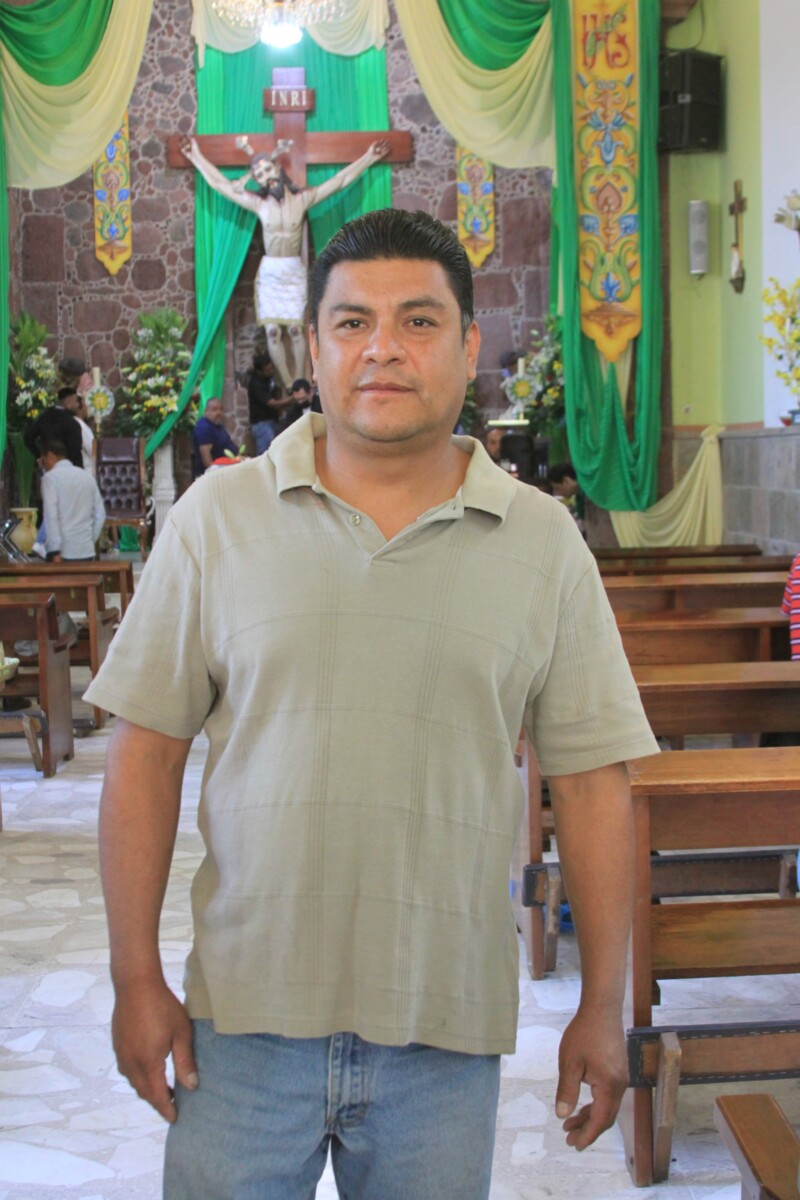
Carlos Mendo has been responsible for the honor guard of the Lord of Huaje for ten years.
At the end of the mass, a man reads a list of the various expenses of the festival: the music, the dawn ceremony, decorated candles, dances, dinner for the musicians and the castillo or fireworks tower. He names the families who will assume the expenses. Many of them are from the Nextipac neighborhood
At the exit of mass, they begin to distribute the drinks and the dancers execute their movements to the sound of the drum and the caracol, a prehispanic musical instrument like a trumpet made of shell or ceramic.
Today is expected the visit of Father Eduardo Garcia Orta who spent three years in the community of Jocotepec and still retains the affection for these lands and the veneration for the Lord of the Huaje.
Father «Lalo» as the community calls him, is on his way with a very valuable cendal, a beautifully decorated loincloth that will be wrapped around the image of Christ to be premiered by the Señor del Huaje in his feast. Some representatives of the honor guard gather and wait eagerly for its arrival. «They say that this loincloth has golden threads» a discreet and festive voice is heard. There is much excitement to see it and to welcome the priest.
Upon his arrival, Father Lalo is received with signs of affection. They congregate at the altar and everyone approaches to see the loincloth, which is bright red with gold embroidery.
To carry out the change of the loincloth, putting the new one in place of the current one, the men remain in the enclosure and the women wait outside. A woman who accompanies me in the wait says, “These are men’s duties; women have no business being there.”
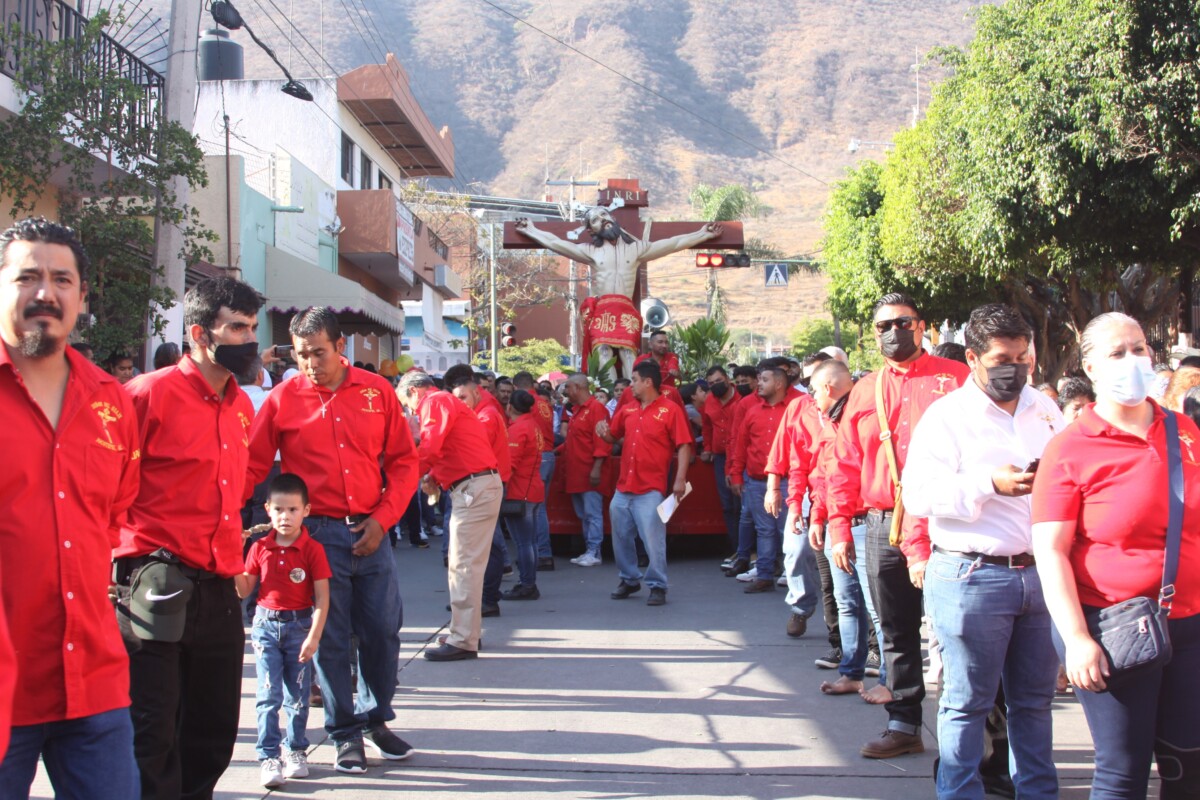
The members of the guard of honor wear bright red shirts to guard the Lord of the Huaje.
Carlos Mendo is the main person in charge. For ten years, he has overseen the honor guard. It is made up of about a hundred people, mostly men and a few recently integrated women. He was questioned by some parishioners for having allowed access to women.
“God doesn’t say you don’t or you do,» he responded confidently.
Mr. Roberto Mendo, Carlos’s father, was the last person in charge and left the position to his son.
It is a great responsibility, says Carlos, because it means taking care not only of the image of a beloved Christ, but also of a piece of historical artistic value. The last restoration cost 140,000 pesos (about US$7,000), which were raised with donations from the community.
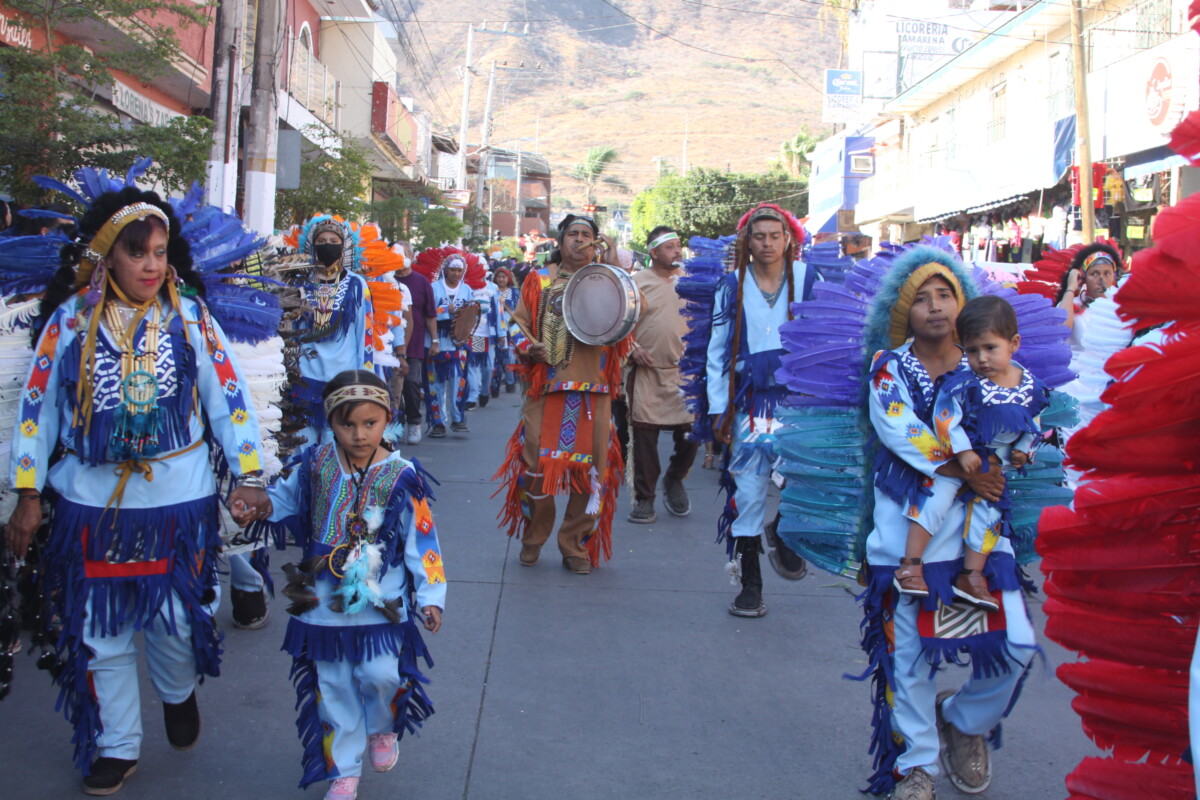
The dances are present in the procession in which children and adults participate.
It is a difficult responsibility, but it is also a blessing. «Now I only ask for work and health,” he said.
Víctor, a member of the honor guard, shares a testimony. His wife was sick for a couple of months, having inexplicably lost the mobility of her body, during which time she remained in bed in a lot of pain. They went to several doctors and his wife’s health did not improve. One morning, she told him, “I dreamed of the Lord of the Huaje.”
In the dream, the Lord of the Huaje told her to «drink from that water,» pointing to a small puddle next to him. The woman asked to be taken to the temple with the figure of the crucified Christ. When she was in front of the altar there was some water on the floor, so she brought her lips close and implored for her health.
That day she walked out of the temple, healthy. From then on, both asked to be part of the honor guard.
On the first Sunday of May, the day denoted for this celebration, the procession is almost the last ceremony of the day. Before that, mariachi musicians coincide with the band with their blue shirts and at least five groups of dancers. Colorful plumage abounds to the beat of the drum.
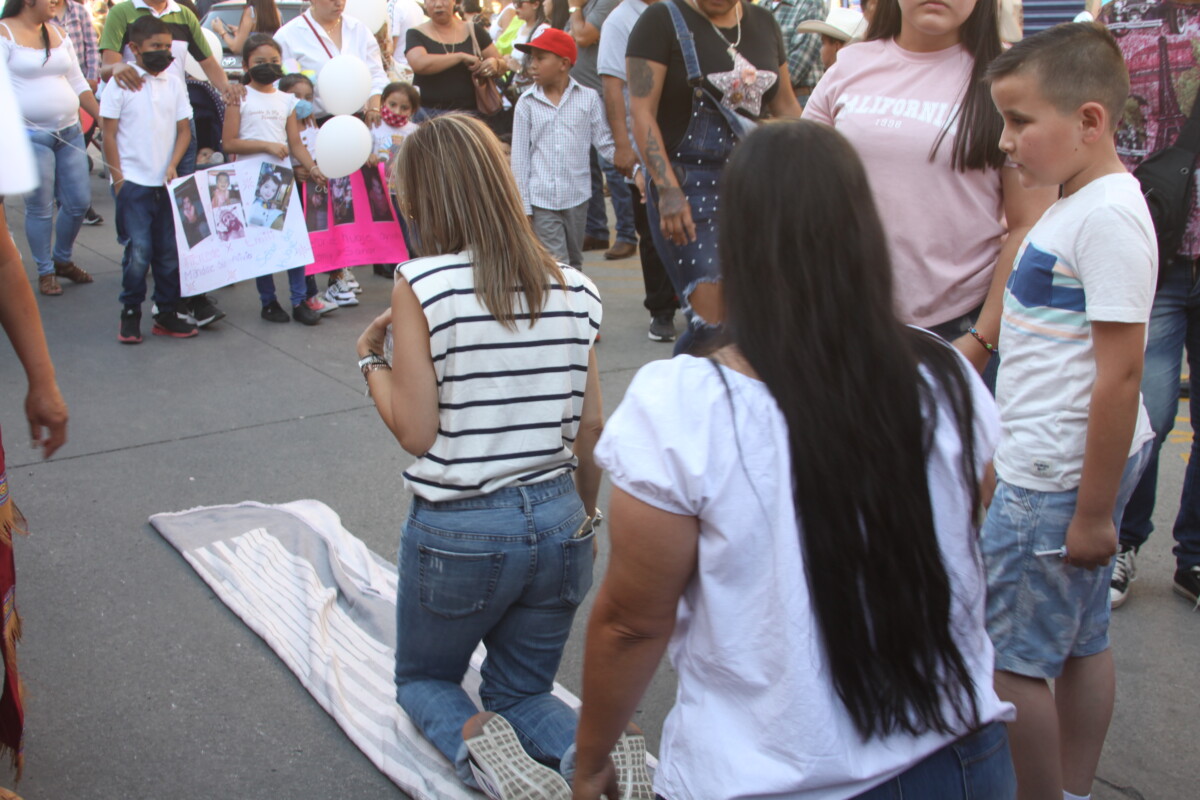
Many parishioners go to meet the icon on their knees.
There are lines of people kneeling to approach the crucified figure to fulfill a request or ask for a favor.
The route of a couple of hours is a mosaic of dancers with multicolored feathers and costumes, musicians with their polished costumes and the honor guard with their bright red shirts.
The sound of the drums announces the approach of the procession. As it passes, the figure of the crucified Christ, almost three meters high, draws sighs and tears.
In a loudspeaker, the voice of a woman prays and sings, “There are eyes that, if they look at me, make my soul tremble with love, they are such beautiful eyes…”
The Lord of the Huaje is carried on a special platform driven by a man. He advances, standing out among the crowd with his gaze towards the sky, towards the mountains, towards the faithful who sometimes look into his eyes. “Because He lives,” says a woman next to me, ecstatic with fervor.
Translated by Sandy Britton
Park in Riberas del Pilar being rehabilitated
The mayor of Chapala, Alejandro de Jesús Aguirre Curiel, during the inspection of the rehabilitation of the Riberas del Pilar park entrance.
Editor.– The municipal government of Chapala is continuing with the rehabilitation of public spaces in the city and the municipality’s surrounding towns. According to the municipal president, Alejandro de Jesús Aguirre Curiel, one of the locations receiving attention is Riberas del Pilar Park. The park is one of the most emblematic places of Riberas, with the two stone pillars supporting the neighborhood name.
«The Recovery of Public Spaces program continues throughout the municipality. Soon the public will be able once more to enjoy the Riberas del Pilar Park,» City Hall announced on social media.
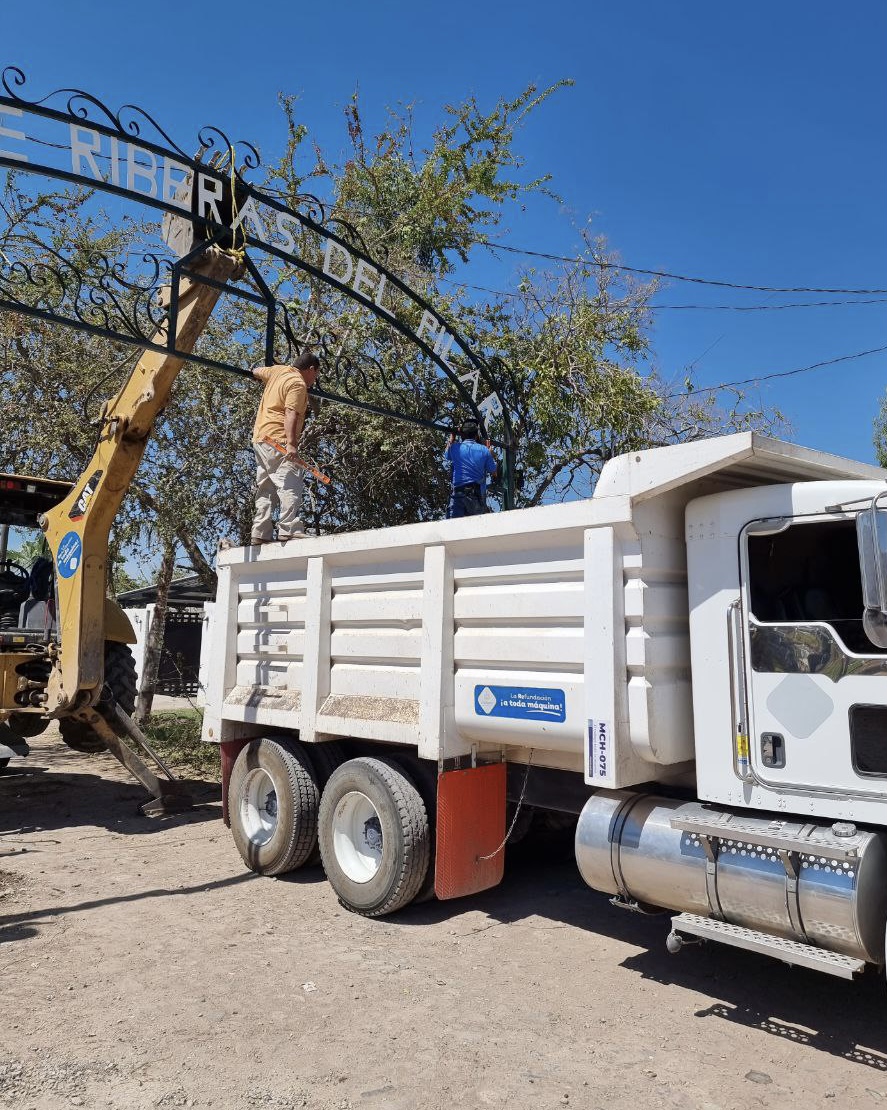
Workers of the Municipality of Chapala start with the rehabilitation of the Riberas del Pilar Park.
«The recovery of public spaces is being carried out with the objective that families will be able to enjoy public spaces worthy of our municipality and its people,» the director of Social Communication informed Seminario Laguna.
In addition to the iconic pillars, the sign for the park also received a freshening up.
Translated by Rebecca Zittle
PHOTONOTE:
Héctor Ruiz Mejía (Jocotepec).– Despite some of the Jocotepec boardwalk merchants reporting low sales during the Holy Week and Easter holiday season compared to last year, Víctor Loza Ornelas, Director of Tourism and Artisan Promotion, confirmed that the holiday period brought approximately $1.8M (about US$90,000) to the local community, saying » it’s a very good number.»
Translated by Amy Esperanto
OPINIÓN: EL GRITO EN LA LAGUNA
El Lago de Chapala. Foto: Héctor Ruiz.
Por: Daniel Jiménez Carranza
Sin duda, actualmente estamos afrontando las consecuencias de una crisis generada en principio por la pandemia, y enlazada con el conflicto bélico en Europa, que ha provocado incertidumbre y desestabilización en las economías a nivel global, marcadas por el incremento del desempleo, incremento en el precio de los combustibles, escasez de alimentos, y que puede complicarse si es que este fenómeno no llega a una solución pacífica ausente de aquéllas respaldadas por la proliferación armamentista de sus actores.
Un conflicto bélico de mayor magnitud, definitivamente provocará una conflagración a nivel mundial, pues mayor número de países se involucrarán, los armamentos empleados serán de mayor calibre, a tal grado que desembocarán en una confrontación nuclear, en donde no habrá vencedores ni vencidos, pero sí muerte, desolación y destrucción del hábitat, cuya regeneración llevará años.
La aportación de capital y armas para Ucrania, no ayudarán a resolver el conflicto, sino todo lo contrario, es preciso encontrar una alternativa válida a través de una comisión de paz integrada por países representativos y la ONU, para resolver este enfrentamiento .
La política no intervencionista de nuestro país, se ha mantenido firme y sólida ante tales circunstancias, apoyada en el respeto de los países al mantenimiento de su integridad territorial, lo cual es notablemente condenable, en el caso de la agresión armada como la que se ha fraguado en Ucrania.
Los efectos económicos y sociales de esta confrontación militar y la pandemia, han puesto de manifiesto la necesidad de fortalecer los lazos regionales de integración entre países que por su condición geográfica, se alineen en un bloque común que internamente se fortalezca y sea autosuficiente, y que sin duda, la propuesta del presidente López Obrador, de integrar no sólo a los países Latinoamericanos, sino a todo el continente, incluyendo EE.UU. y Canadá, sería un logro trascendental que beneficiaría y complementaría a todas las economías de países que en la actualidad se encuentran a la zaga de cualquier posibilidad de remontar su condición social y económica como consecuencia de su incapacidad de explotar y comercializar adecuadamente sus recursos. Esta integración regional, deberá ser acompañada de la creación de un fondo de infraestructura con aportación de todos los países integrantes, que permita disponer de recursos a países carentes de los mismos, para construir carreteras, puertos, y todas aquellas instalaciones y equipos que requieran.
Complaint for dredging of Ajijic beach dismissed by Attorney General
Symbolic closure of the reported dredging in Alceseca beach area last May 2021. The photo shows the traces of the work recently done by the machinery. Photo: Archive.
Sofía Medeles (Ajijic).- The Attorney General’s Office (FGR) dismissed the complaint filed by activists from Ajijic, for the dredging of the federal territory of Lake Chapala on Alceseca beach.
The complaint was filed in June of last year, pointing out the dredging and extraction of sand for the construction of a floating dock.
At least four lawyers from Ajijic worked on the case for approximately ten months. The FGR and the National Water Commission (CONAGUA) dismissed the case since they found no evidence at the scene 6 months later despite evidence presented by the Ajijitecos.
«The complaint was filed at the regional FGR headquarters in Ocotlán. When the Investigative Police arrived to investigate in August, they told us that we had to go to CONAGUA to file a complaint,” said one of the citizens. CONAGUA is the governmental authority of Lake Chapala.
When a letter sent to CONAGUA was never answered, an injunction (amparo) was initiated. In December it was determined that the CONAGUA was obliged to carry out its investigations and to continue with the case,» said one of the lawyers.
The citizen interviewed by Laguna said that when CONAGUA conducted a tour of the area months after the incident, it claimed that nothing of what was accused was found. The Prosecutor’s Office decided that there was no crime to prosecute, ignoring the record of facts that a notary made the day the dredging was stopped and the multiple photographs, videos, and witnesses that documented the incident.
«This legal process was tiring in time and form. When CONAGUA representatives met with the protesters they encouraged the citizens to make the denunciation through legal channels. This encouragement was a contradiction of CONAGUA’s actions in this process,” said the citizen.
“The demand that activists utilize other legal channels indicates that the authorities do not care about environmental issues, and if federal institutions are not interested, municipal or state institutions are even less interested. The result is that the authorities refuse to intervene,» said one of the lawyers at the scene.
The dredging was documented on May 20, 2021, through social networks with videos that captured how several dump trucks were removing truckloads of sand.
The formal complaint to the FGR was filed in June 2021. In January of this year, it was announced that the amparo had been resolved, asking CONAGUA to collaborate to clarify the unlawful accusation. Recently, the case was dismissed because «there was nothing on the beach» where the dredging took place.
Translated by Nita Rudy
Rotary Club donates fire truck to Jocotepec
Photograph of the original truck that had been identified by the Rotary Club Guadalajara International, equipped with the ladder and hoses. .
Héctor Ruiz Mejía.- The Civil Protection and Fire Department of Jocotepec received the donation of a fire truck.
The vehicle was acquired through a district grant organized by the Rotary Club Guadalajara International A.C., in conjunction with the other Rotary Clubs of Jocotepec, Ajijic and Chapala.
This is intended to improve the equipment of the fire department, which handles about two thousand reports per year, including firefighting, assistance in accidents and gas leaks.
However, Eduardo Góngora Olmedo, one of the organizers of the grant, commented that, despite «feeling happy» for the contribution to the firefighters, the purchase was not exactly as they had expected.
After the Rotary Club of Guadalajara identified the vehicle in the United States, they made arrangements for its purchase and subsequent transfer to Jocotepec, but when they received it, they realized that it was a different model. Consequently, the purchase price was higher than stipulated, since originally the truck would have cost $20,000 US dollars, which, with the exchange rate in pesos at that time, totalled about 407 thousand pesos. An additional 50,000 pesos to transport it to Mexico brought the total to approximately 457,000 pesos.
Although the actual amount paid was not specified, Góngora Olmedo assured that it was much higher than previously agreed.
He also explained that the model that was thought to have been purchased would have been «much better» equipped, as it had a ladder, hoses and other additional equipment. However, he said that he was satisfied with the truck that the Fire Department now has at its disposal.
In order to raise the funds for the purchase, many people joined the project. Two bazaars were opened where clothes were sold. In addition, the Jocotepec City Hall allocated 150,000 pesos.
Translated by Sandy Britton
Rap kids from Ajijic embark on their musical careers
From left to right: Diego Zamora «Dj Azteca», Jorge Ramón Rochin «Dj George» and Cristian Axel Rochin «Dj Kid». Photo: Sofía Medeles.
Sofía Medeles (Ajijic).- Ajijic has a reputation for being a center of artists, not only in painting, but also in music. Currently, the rap music genre has influenced it’s new generations, demonstrated by Diego Zamora, 11 years old, Cristian Axel Rochin, 12, and Jorge Ramón Rochin, 9, three children who decided to start their career as rappers. Their artistic names are: Dj Kid, Dj Azteca and Dj George and they acquired a taste for rap and an intention to perform it from an early age.
It was not until recently that they put it into practice, attending the Cochera Cultural art center in Ajijic where different workshops are taught for children in the San Sebastian neighborhood, north of the town of Ajijic. «We are the only ones who rap in the garage. (Cochera Cultural). Our favorites are Santa Fe Klan and Gera MX – they inspire us», they told Laguna.
Their first performance in front of an audience was last Friday, April 22, as part of the Earth Day commemoration program, in the main square of Ajijic. The three children had a space to share their rhymes, which were applauded by the audience.
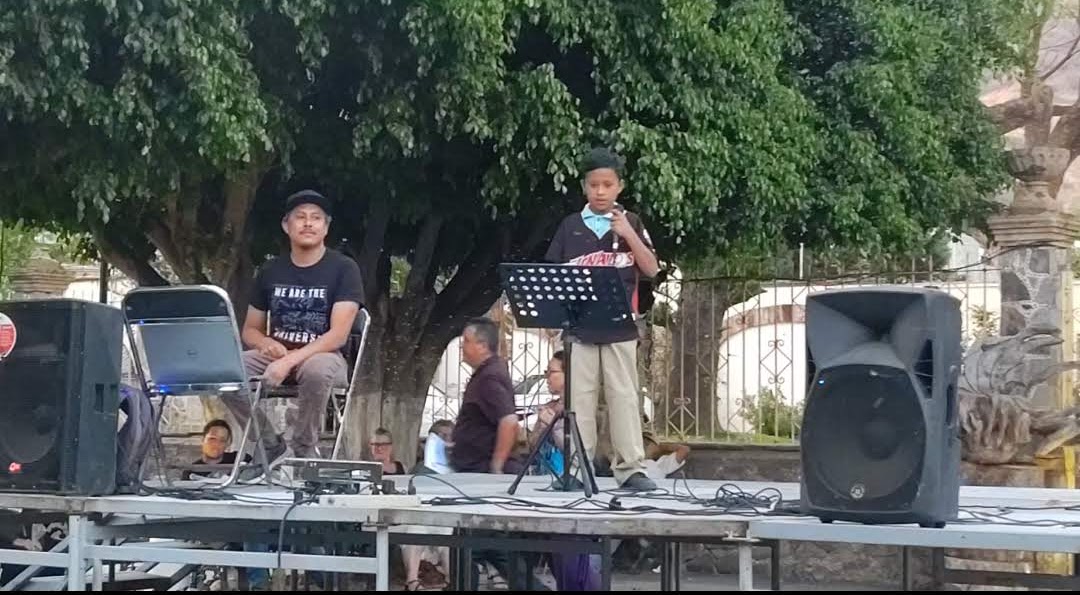
Dj Azteca during the presentation last Friday, April 22.
«We were nervous, but once we finished we felt calm. Our teacher told us to put all our energy into the presentation. We don’t know when we will perform again with an audience like this, but this last time made us feel more encouraged,» shared Dj Kid.
The three kids, who say they are in the process of recording an album at the Cochera Cultural, said they would also like to publish their songs on video platforms such as YouTube. They also advised their contemporaries to continue with their goals, and to get support from teachers to increase their skills.
The artist from Ajijic and teacher of some of the workshops for children at the Cochera Cultural, Artistic Director Antonio López Vega, commented that the project is aimed at children from the San Sebastián neighborhood and its surroundings, with workshops on children’s painting, papier-mâché, ceramics, among others, as well as the music workshop taught by Eleazar Soto and the dance workshop with teacher Emilia Gálvez.
These workshops are held on Saturdays from 10:00 a.m. to 12:00 noon and are free of charge. Antonio Lopez said that the program is happy to accept donations in kind for the children, for example, paper for painting, brushes of different sizes, etcetera.
Translated by Patrick O’Heffernan
Detienen a tres integrantes de un grupo delictivo en Chapala
Los hechos se registraron en la colonia Colinas de Chapala. Foto: Twitter.
Redacción.- Elementos de la Fiscalía del Estado de Jalisco (FE) quienes realizaban una investigación en el municipio de Chapala durante la tarde de este martes, lograron la detención de tres personas quienes presuntamente forman parte de un grupo de la delincuencia organizada que opera en la entidad.
De acuerdo con el reporte, al estar realizando actos relacionados con una carpeta de investigación por la desaparición de la adolescente Julissa Esmeralda Oliveros, en la colonia Colinas de Chapala, personal de la Fiscalía Especial en Personas Desaparecidas (FEPD) avistaron la presencia de varios sujetos los cuales portaban armas de fuego.
Al notar la presencia de los elementos, los sujetos intentaron evadirlos; sin embargo fueron detenidos por el personal de la FEPD.
Además de los detenidos, el personal de la Fiscalía de Jalisco aseguró armas de fuego, chalecos balísticos los cuales portaban siglas de un grupo de la delincuencia organizada, una bolsa con estupefacientes, así como un vehículo automotor.
La FE informó que tanto los detenidos como lo asegurado serán puestos a disposición del agente del Ministerio Público de la Fiscalía General de la República quienes definirán su situación jurídica en el término constitucional.
Salud y bienestar en la Ribera
Por Leticia Trejo.
Desde que tengo uso de razón recuerdo haber sufrido problemas digestivos, mis problemas más graves: estreñimiento, gastritis, colitis y evacuaciones irregulares. Espero que este tema no te incomode querido lector ya que siendo tan común en tantas personas todavía es un tabú hablar de ello. Gracias a esa salud tan precaria, que tuve durante tantos años, me esforcé por llevar un estilo de vida saludable y he aprendido mucho en el camino, lo que no sabía hasta hace algunos años es que cuando tus emociones se desbordan y no tienes una buena gestión del estrés estarás teniendo trastornos digestivos, aunque comas solo lechuga y manzanas.
El estrés es algo natural, nacemos del estrés, en tensión muscular con los tejidos conectivos (fascias) en constante encogimiento, esto afecta a nuestros órganos y estructuras musculares y óseas. Por este motivo es un deber que encontremos herramientas para enseñarle a nuestra mente que se puede vivir de otra forma, y a nuestro cuerpo que podemos relajarnos de vez en cuando para lograr un equilibrio. Si hacemos un recuento del estrés generalmente lo sentimos por situaciones que ni siquiera están pasando en tiempo real, es decir, por ejemplo: en este momento ¿alguien te está atacando? ¿estás teniendo un infarto? ¿estás peleando con alguien?, en este momento, mientras lees TU estás bien. Sin embargo, constantemente estamos imaginando tragedias que disparan la respuesta natural del cuerpo hacia una situación que, cuando es real, nos ayuda a responder a la emergencia, pero cuando no es real ¿Qué es lo que pasa?:
Cuando te estresas tu sistema endócrino libera ciertas hormonas adecuadas y eficientes para que tu mente y tu cuerpo entren en estado de alerta y respondan a la situación, algunas de estas hormonas son el cortisol, la adrenalina y la noradrenalina, y entonces el estómago produce una mayor cantidad del vital ácido clorhídrico que es el sustrato más caliente del organismo, es básicamente fuego. Entonces ¿qué pasa cuando TODO el tiempo o la mayor parte del tiempo tú estás generando emociones intensas de emergencia? Que TODO el tiempo hay una gran cantidad de ácido clorhídrico en tu bolsa estomacal quemando la pequeña tapa que separa al estómago del esófago (se llama píloro) y eso, querido lector es la gastritis. Como te puedes dar cuenta es una respuesta sana del organismo, pero nosotros la convertimos en una enfermedad. Entonces ¿qué haces? Tomas omeprazol, sinuberase y toda una gama de antiácidos para quitarte la molestia.
Pero aquí viene lo más grave: la función más importante del ácido clorhídrico es desestructurar y transformar los alimentos para que se vuelvan líquidos y pasen a ser absorbidos para separar los nutrientes de los desechos. Entonces cuando tomas muchos antiácidos debilitas al ácido clorhídrico que al perder su fuego es incapaz de transformar los alimentos generando lo que conoces como indigestión, sientes que la comida no pasa, está atorada y no se absorbe, no se asimila y genera múltiples molestias. Tengo tres consejos para ti:
- Convierte en sagrado el tiempo para consumir tus alimentos, se consciente, prepara tú mismo lo que te vas a comer, hazlo lentamente y disfruta con calma tu alimento.
- Evita los excesos, si comes lentamente el sentido de saciedad te indicará que ya no necesitas más comida.
- Observa tus emociones, acude a un Psicólogo, medita y respira.
No son muchos consejos pero espero te ayuden a lograr cambios positivos en tu forma de ver el estrés, y también en la forma en que nutres tu preciada vida humana.
Vendors in Jocotepec abandon their stalls in the market due to low sales
Abandoned wooden modules in the Municipal Market of Jocotepec each costing $7,500 pesos, Photo: Héctor Ruiz.
Héctor Ruiz Mejía – Jocotepec: They threw in the towel. The street merchants who were relocated to the upper floor of the Municipal Market of Jocotepec decided to abandon their stalls after months of low sales.
Vendors interviewed by Laguna said that after a little more than three months of «going through an odyssey» to receive some solution or support from the City Hall to cushion the difficult economic situation they suffered after being relocated, they have opted to move to other places to sell their merchandise.
«I actually had to look for a job. This is over. We tried and fought, but we were left with no response and no support. So I too, like everyone else, am leaving,» commented one of the last vendors.
Semanario Laguna toured the second floor of the building last Tuesday, April 26th , at noon and found that, despite the more than ten million pesos invested in a rehabilitation project that would «give life» to the commercial space, it was empty.
Products such as cooked nopales, cambray onions, chopped and bagged vegetables, avocados and radishes, to mention a few, which not only energized the streets and sidewalks of the town, but were the livelihood of more than 30 families selling on Morelos Street on the outskirts of the market, are no longer for sale.
In addition to looking for another livelihood, some of the affected vendors opted to move to other parts of the town, and even decided to «try their luck» in the neighboring towns of Ajijic and Chapala to continue doing the only thing they know: selling products on the sidewalk, an activity they were no longer allowed to do in Jocotepec.
«It is a shame that they are leaving, I always used to buy my nopalitos and vegetables here with the lady, but when they moved her, it was difficult for my mother and me to go up there; and now we will have to look for someone else,» commented one of the consumers.
Of the ten wooden vendor stands installed on the upper floor of the market to relocate the street merchants, costing approximately $7,500 pesos each, only two are now being used.
City Hall has remained tight-lipped about the situation. After several meetings, negotiations and even a demonstration, officials are aware of the monetary difficulties faced by the affected merchants from the beginning of the relocation, but has not issued any statement on the matter.
Translated by Patrick O’Heffernan
© 2016. Todos los derechos reservados. Semanario de la Ribera de Chapala
